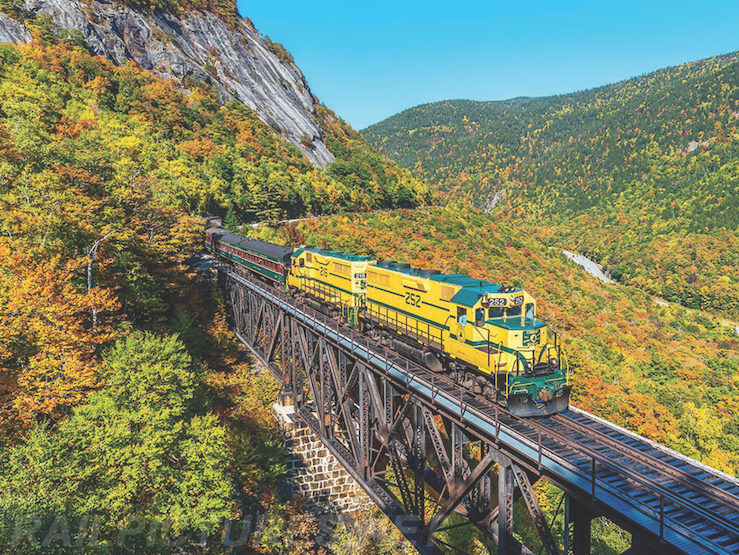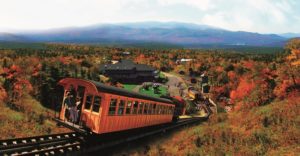
When the newly constructed Atlantic and St. Lawrence Railroad arrived in Gorham, N.H., in July 1851, the future of the Mount Washington Valley and White Mountains charted a new trajectory. Prior, the region catered largely to commercial traffic and the occasional visitor traveling by stagecoach. And other than a few taverns at road intersections and ferry crossings, there wasn’t much to do compared to what we know of “the Valley” today.
But it wasn’t long before the railroad industry gained a foothold across New England, and taverns were converted to hotels in response to an influx of tourists. Railway infrastructure continued to improve into the 20th century, connecting major hubs like New York, Boston and Portland to rural destinations throughout New England. Grand hotels and inns, few of which still exist today, were built to host wealthy vacationers from East Coast cities during the summers. After the first passengers were dropped off in Gorham, construction of the highway through
Pinkham Notch began, as did the Mount Washington Auto Road — the nation’s oldest manmade attraction. And thus, the age of tourism in small-town New England was born.
In the mid-20th century, the construction of interstate highways along with the popularization of personal automobiles led to the demise of the rail system, but the newly found tourism industry would continue to grow in increasingly popular destinations like North Conway, Bar Harbor and Rutland, to name a few. Today, some of these rail systems continue to operate as tourist attractions, providing visitors with a prime opportunity to pay tribute to the region’s rich history.




